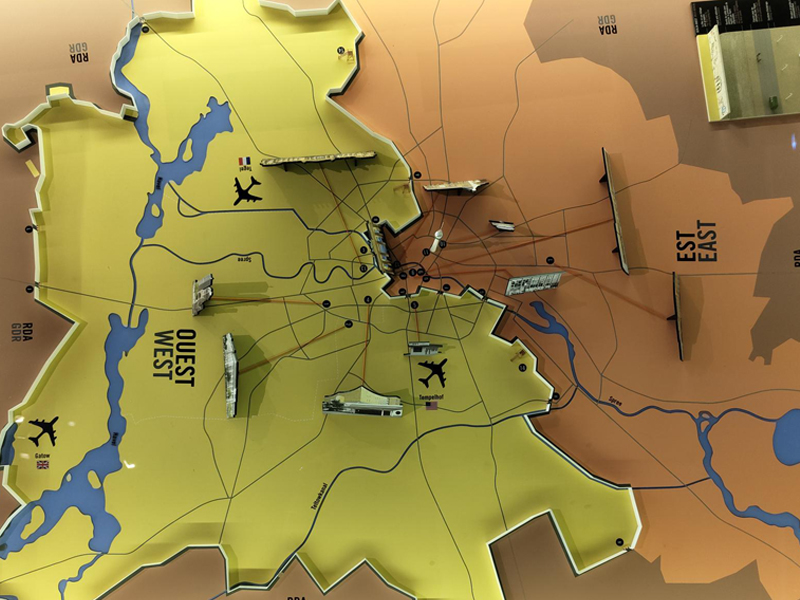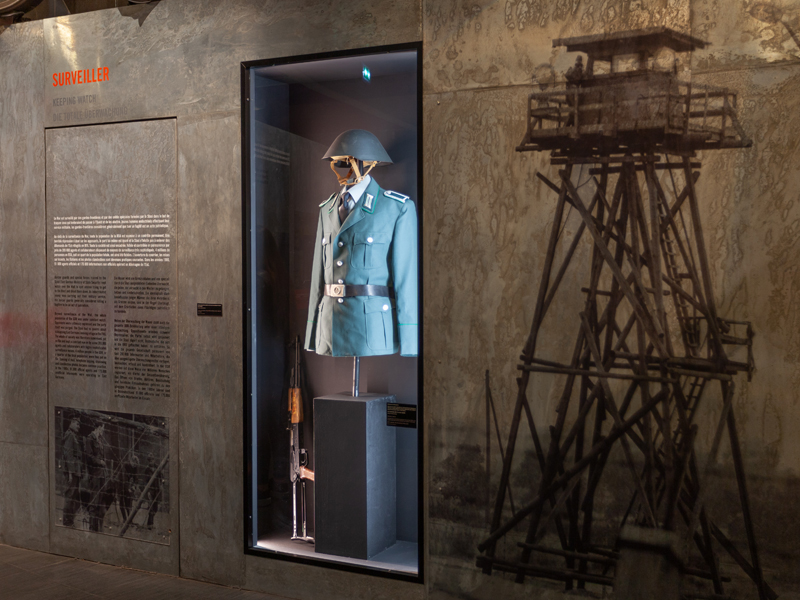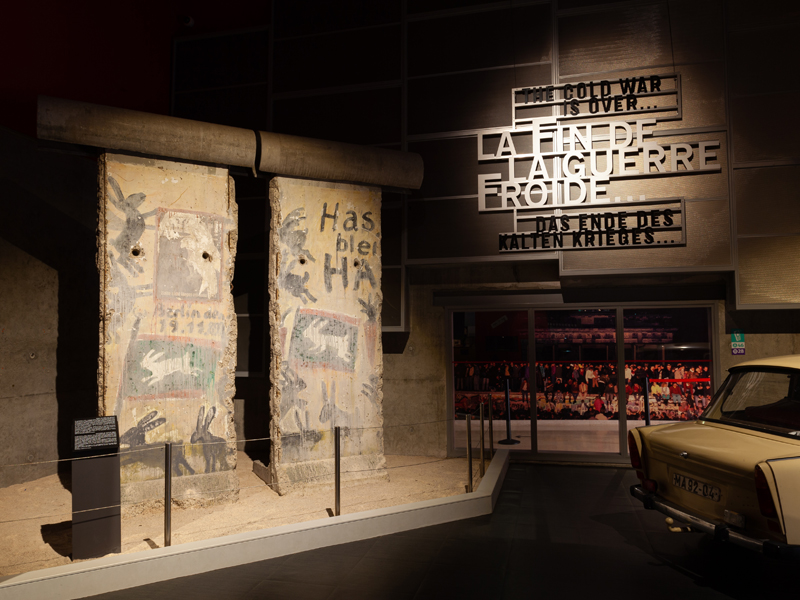The division of Berlin into two zones of influence, from the end of the World War II until the fall of the Berlin Wall in 1989, is without doubt one of the most remarkable symbols of the Cold War.

The division of Berlin into two zones of influence, from the end of the World War II until the fall of the Berlin Wall in 1989, is without doubt one of the most remarkable symbols of the Cold War.
As soon as the Second World War was over, Germany entered a period of East-West antagonism. The simultaneous defeat of Germany by Soviet and Anglo-American troops, who linked up at Torgau in April 1945, caused the division of Germany during the Cold War.
Cold and hunger were a constant torment to the city’s people. The United States’ Marshall Plan brought an end to these difficulties, but heightened the division brought about by the occupied sectors: the unity of Berlin was but a memory. In Europe, the occupied zones gradually chose their side and two ideological blocs were formed.

More than 230 people were shot dead by the Vopos (East German security forces) between 1961 and 1989, as they tried to flee “to the other side of the wall”.
The “wall system” was closely guarded by GDR soldiers, either from their observation towers or during patrols in military vehicles. Before taking position, these young men underwent extremely strict, even brutal, training. They were ordered to shout a warning then shoot at any fugitive. Surveillance was not limited to the wall, however. The entire East German society was spied on.
Tens of thousands of East Germans tried to escape to “the other side of the wall”, despite the huge risk. Escape attempts came in every form imaginable: digging tunnels, fleeing on a boat (in places the wall was a river border), making hiding-places in the trunks of cars, and even crossing in a hot air balloon.

The year 1989 saw the dismantling of the Soviet bloc. After the drawing back of the iron curtain in Hungary, the fall of the Berlin Wall opened the door to German reunification.
During the night of November 9 to 10, 1989, the Berlin Wall, after ripping the city in two and separating families for 38 years, fell at last under popular pressure. The two sections of the Wall presented in this room give you an idea of the proportions: at the top (3.60 m) there is a pipe in cement to prevent all escape attempts using grappling hooks. Painted from the East shortly after the fall of the Wall by the artist Manfred Butzman, these concrete sections were saved during the dismantling. The artist depicted rabbits, very present in the no man’s land of the Wall system, to symbolize the fate of the fugitives (“get shot at like rabbits”) and more generally as a symbol of freedom and peace. The expression “Hase bleibt Hase”, “Once a Rabbit always a Rabbit”, advocates a peaceful revolution.
You might also like